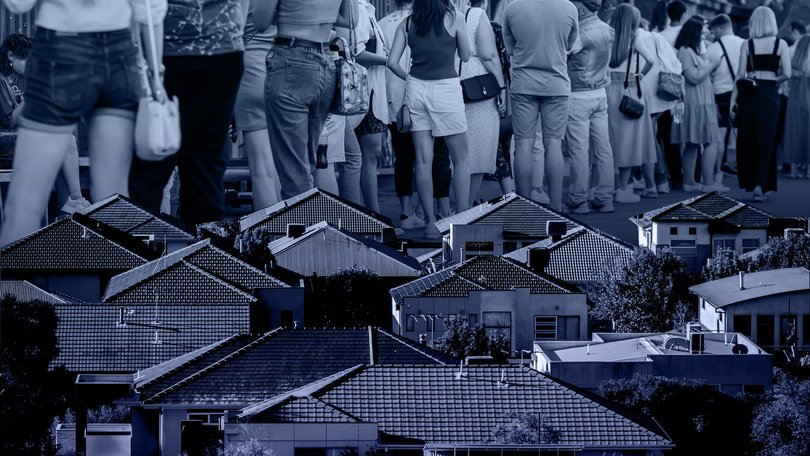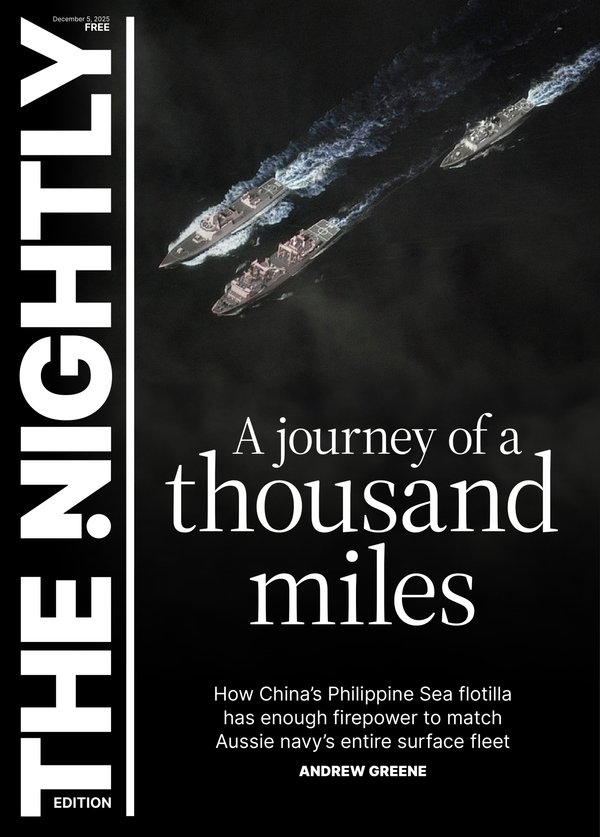The damning figures that prove surging immigration is driving up house prices

Surging immigration, generous capital gains tax discounts and lagging construction have made houses unaffordable for many Australians over the past 25 years, historic data shows.
Sydney’s mid-point house price of $1.576 million in October was 15 times the average, full-time salary of $104,520, Cotality data showed. A generation ago, the average-income earner could still buy a house with a backyard in Australia’s most expensive capital city market.
Many voters blame an influx of foreigners for housing shortages, views that helped double support for the anti-immigration One Nation party over the past six months, a poll published Monday found.
Sign up to The Nightly's newsletters.
Get the first look at the digital newspaper, curated daily stories and breaking headlines delivered to your inbox.
By continuing you agree to our Terms and Privacy Policy.Australia’s median capital city house price of $1.091m is more than 10 times the average, full-time pay, leaving borrowers with significantly higher debt levels. Even with a 20 per cent mortgage deposit of $218,227, an average-income earner would owe the bank more than eight times their pay buying a typical, big city house.
The banks typically lend borrowers five times their pay and the banking regulator considers it risky for anyone to owe more than six times their income, making mortgage stress a big issue during a cost-of-living crisis.
Average-income earners are increasingly restricted to apartments in the big cities, with only working couples or a high-income earner able to buy a house with a backyard.
During the past 25 years, the pace of home construction has barely changed despite immigration tripling.
Economist David Llewellyn-Smith, the chief strategist at MB Super, said trying to accommodate more than 300,000 new migrants every year - a “city the size of Canberra” - will drive up prices further.
“If you’re pouring that into your existing infrastructure, then you’re going to need to build an awful lot for it to not tighten the demand-supply balance,” he told The Nightly.
“What matters to the housing market and how many houses you’ve got to build is the raw number of people not the percentage increase. That gives you rising rents, which all things being equal, is going to increase the value of an investment property.”
With builders leading the insolvency charts, the problem was expected to get worse before it improved unless immigration was frozen for several years, he said.
“If you persist with immigration, it would terribly get worse,” he said.
“If you were to have an immigration freeze, and take all that pressure off, you would immediately get stalled and falling rents and then that would deter investors and a lot of that existing stock that’s held within the rental market would probably be sold back to the owner-occupier market.”
Historic changes
In 1999, Sydney’s equivalent median house price of $272,500 cost seven times the average income of $39,156. With a 20 per cent deposit, it was possible to buy a house with a backyard in Australia’s most expensive city on one income.
Housing became unaffordable for many during the 2000s as immigration almost tripled during the mining boom, from 110,104 in 2003 to 301,200 by 2008. Building activity has barely grown during the time to keep pace with population growth.
The house price surges also coincided with the introduction of the 50 per cent capital gains tax discount in September 1999. That meant an investor who made a $100,000 capital gain on a house only needed to declare $50,000 of that on their taxable income.
“It increased the tax incentives to invest in property later on,” Mr Llewellyn-Smith said.
During the 2010s, immigration levels stabilised around the 200,000 level.
By 2019, Sydney’s median house price of $869,579 cost 10.2 times an average annual full-time salary of $84,958.
That also coincided with Australia building 1.05 million homes between 2015 and 2020, or an average of 210,000 a year.
But since then, building activity has slowed, despite Labor’s plan to build 1.2 million homes over the five years to June 30, 2029.
During the last financial year, 174,030 new homes were built, which was well below the 240,000 a year on average needed to meet the National Housing Accord target. Australia’s net overseas migration level stood at 315,900 people in the year to March.
Back in 1999, when Australia was accepting 104,210 migrants a year on a net basis, 142,994 new homes were built during that year.
A decade later, when 277,700 migrants arrived in Australia, the number of new homes built had barely climbed to 145,375.
When immigration levels hit a record high of 548,800 in the year to September 2023, Australia built just 173,993 new homes. Builders also made up more than a quarter of insolvencies.
Key issue
A new Redbridge/Accent Research poll had immigration as the fifth most cited issue in the poll of 1011 people, behind the cost of living, healthcare, housing and crime.
But immigration was the top issue for eight per cent of the voters surveyed, with Opposition Leader Sussan Ley indicating the Coalition would be announcing a new immigration policy in coming weeks.

Redbridge director Tony Barry said some voters blamed high immigration for unaffordable housing and this had the potential to become a bigger issue.
“Perceptions about high immigration are a component for some voters,” he told The Nightly.
“Simple things like seeing a GP within a week or a few days. Getting a hospital bed, elective surgery, congestion on roads, perceptions around house prices, it might be rentals.
“If the debate now focuses to immigration, which looks like it will, there is potential for that issue to elevate in terms of relevance and salience to the voters.”
The poll also showed One Nation having the strongest support on immigration policy, with 27 per cent backing them, ahead of Labor on 20 per cent, despite immigration soaring to record levels on their watch. The Coalition was in third place with just 19 per cent support.
Provincial capital cities are really feeling the strain with Perth house prices soaring by 9.2 per cent during the past year to $926,464 in a city with rental vacancy rate under one per cent.
Perth-based One Nation senator Tyron Whitten said high immigration was unsustainable.
“At present, Australia is not keeping up, and the strain is showing,” he told The Nightly. “Ordinary Australians are now bearing the consequences of this policy failure.”
But Mr Barry, a former Liberal Party strategist, said the Coalition would lose even more voters in urban areas if it went too hard against immigration, adding this would do little to boost their primary vote to an election-winning position.
“You can’t out-Hanson, Hanson,” he said. “The risk is you lose some of the voters in the centre and some of the soft vote.”

